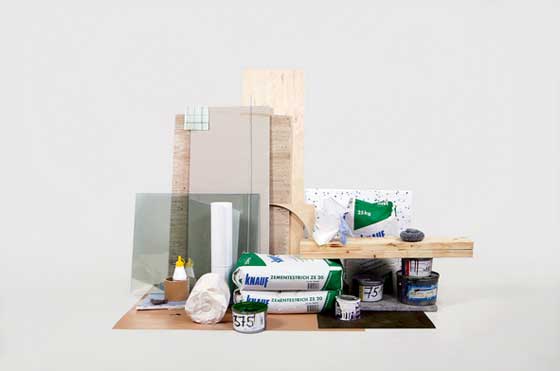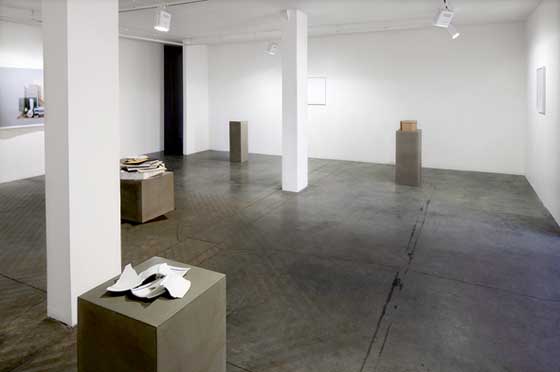|
|
| The order of chaos Jānis Borgs, Art Critic Whirls of jumbled and organized thoughts Darja Meļņikova. Dashing Lines and Forming Heaps 15.05.–19.06.2011. Contemporary Art Centre kim? | |
| It’s not often that you chance to meet a Soul Mate when viewing an exhibition. Occasionally a kindred spirit so close that you could call it, quite in the Schleserian style, Insider [with reference to local politician Šlesers – Ed.note]. This time, in the May/June season, it was the wise carers of the delicate garden of conceptualism at kim? who had provided a surprise just like this in the shape of an exhibition by the young artist Darja Meļņikova. She has called it all Dashing Lines and Forming Heaps, a fairly clearly and non-pretentiously defined concept – which doesn’t happen very often. This is supported by the artist’s statement, included in every single press release referring to the event: “A messy writing-table also, of course, embodies a certain order. The creator of this disorder, they say, is able to find his/her way around in it. For example, scissors are always, it seems, located under a pile of papers, but for keys one can look among the dirty coffee cups, etc. A mug, in turn, if we accidentally tip it off the table doesn’t break “just like that”: there is, apparently, some kind of order in this process as well. But I have to admit that I know about all this exactly as much as the great majority, which means – almost nothing. Structures take shape while forming heaps. When dismantling them – others appear. It has to be settled this way.” Thank God, the artist doesn’t call on any scientifically – philosophical – mathematical chaos theories, lurking around the corner, which almost of their own accord seek to help and once more testify that “the Fukushima disaster could have been caused by the shivers of a grain of sand in the Sahara desert…” | |
 Darja Meļņikova. Dashing Lines and Forming Heaps. Digital print. 2011 | |
| The messy writing (or computer) table, as highlighted in the exhibition statement, with its piles of papers and documents, business cards, old bills, bundles of read-long-ago or never-read newspapers, forgotten and newly discovered items, cups with crusty coffee grounds, bunches of ballpoint pens that no longer write, dried out sticky tape, used cotton buds and tubes of dental glue, CDs and DVDs and USB flash drives, used postage stamps and still valid foreign coins, rusty paper clips and blunt scissors, antique glasses and even more antique sugar sachets… all of this, among particles of dust, cookie crumbs and an oily substance of unknown origin, is so very familiar and precious. This is the cosy hatchery of thought that in my room is surrounded by towering mountains of books and magazines, and winding trenches of paper along which, moving sideways, one can reach the feather bed domain of Morpheus… This is my environment which some of my friends find “horrifying”. But it’s right here – in the aquarium of my life – that I feel like that [contented] little perch… And that’s how it happens to be – everything precisely as it is for Darja. And that’s exactly the same as it had been at the home of the great Picasso as well: he, too, thought that the right place for every item is where it is at that particular moment. This kind of warehouse atmosphere is characteristic of many of our contemporaries. It tends to be called chaos. But in principle I deny the existence of chaos. It’s just an order which has been structured differently or in alternative mode. Darja Meļņikova embues her compositions of “chaos” with artistic charm, she even gives them aesthetic organization – one could see certain conceptual contradictions in this. If we were to demonize “chaos”. The structural formations of her “things with a different previous life” are formed and layered in a very definite nature morte, motivated by a certain protofunctionalism. The probabilities of possibilities here are dizzying and provoke creative outbursts. Meļņikova, using artistically conceptual means, as if rediscovers the law of permanence of things and values, and the eternal possibilities of variety. Her “chaos” is beautiful, even designer-like. Because the artist’s intelligent and feminine instinct for order is tangible. Darja is no Archangel Michael, who fights with the Satan of “evil-chaos”. She has nursed it, nurtured it and carefully “formed it into heaps”. | |
 Darja Meļņikova. View from the exhibition 'Dashing Lines and Forming Heaps'. 2011 | |
| How inspiring are the rubbish tips of cities and factories! Getliņi is the Klondike of our future. Already in my artistic youth I found places like this to be inexhaustible sources of inspiration, and, under the flag of modernism, sought to display my most striking finds on the book shelf at home. On the other hand, my mother (rest in peace) was not well versed in modernist, let alone post-modernist ideas. Cleanliness, order, duty and discipline – these and similar concepts were her motto, as they were for many of that generation. And so in my Soviet childhood there was a happy coexistence of the red “ideal” of little Volodya, as cultivated at school, with my mother’s proudly upheld teachings of Lord and Sir Robert Baden-Powell, founder of the scouting movement. There was no place for any “chaoses” there. And my mother consistently waged war and regularly removed my collections of rubbish art which had been gathered under the influence of decadent “formalism”. She never muttered under her breath, though, like some Latvian orthodox realists did in the 1960s at the Academy of Art, in reaction to manifestations of modernism: “…now that’s a sort of “Jewish art”…” My mother Anna always had the humanist spirit of Johann Wolfgang von Goethe and ordnung muss sein standing behind her. She, just like that guardian angel, in a quite Christian-like manner warred against the “chaos” of worldly disorder and injustice. Because it was in Christianity that the creative and fertile “chaos” of the antique world was assigned the status of being something negative that should be put down. Chaos can be interpreted as an “evil” which has to be fought. But it is, more likely, the objective order of things where such a fight, it seems, would be pointless. Chaos perhaps “calls” for cooperation. In Hesiod’s Theogony, the Universe and the World emerge from Chaos – a Nothing/ or proto non-substance. From this indefinite void came the first gods: Gaia (Earth), Tartarus (Abyss), Eros (Love and Passion), also Nyx (Night) and Erebus (Darkness). And here in my consciousness my mother and Darja link up, but from different, even opposing perspectives. Because Darja Meļņikova, it seems, has taken on (most likely unconsciously) the antique, pagan and pre-Christian view on “chaos”: creatio ex nihilo. /Translator into English: Vita Limanoviča/ | |
| go back | |







